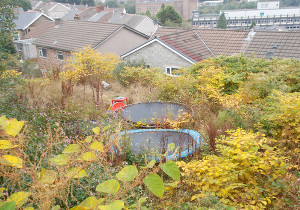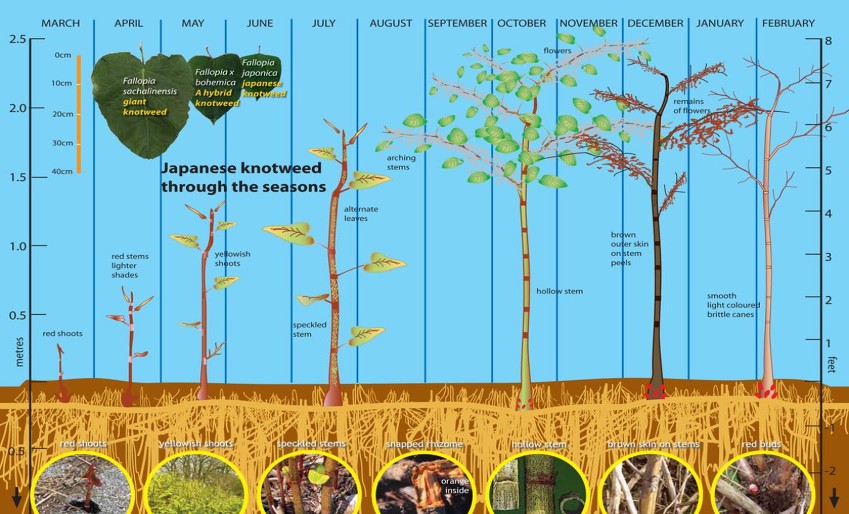What is Japanese knotweed?
What does it look like?
Japanese knotweed, scientific names Fallopia japonica is a member of the dock family (Polygonaceae). It is a rhizomatous (produces underground stems) perennial plant with distinctive, branching, hollow, bamboo-like stems, covered in purple speckles, often reaching 2-3 metres high. The leaves of the mature plant are up to 120 mm in length with a flattened base and pointed tip and are arranged on arching stems in a zig-zag pattern. The plant flowers late in the season, August to October, with small creamy-white flowers hanging in clusters from the leaf axils (point at which the leaf joins with the stem). The underground rhizomes are thick and woody with a knotty appearance and when broken reveal a bright orange-coloured centre. The rhizome system may extend to, and beyond, a depth of at least 2m and extend 7m laterally from a parent plant.
During the winter
During winter, the leaves die back to reveal orange/brown coloured woody stems which may stay erect for several years. Stem and leaf material decomposes slowly, leaving a deep layer of plant litter. During March to April, the plant sends up new shoots, red/purple in colour with rolled back leaves. These shoots grow rapidly due to stored nutrients in the extensive rhizome system. Growth rates of up to 40 mm a day have been recorded.

Flexible Payment Options Available
We offer 0% APR Monthly Payments or
You can split the cost over a number of years*

